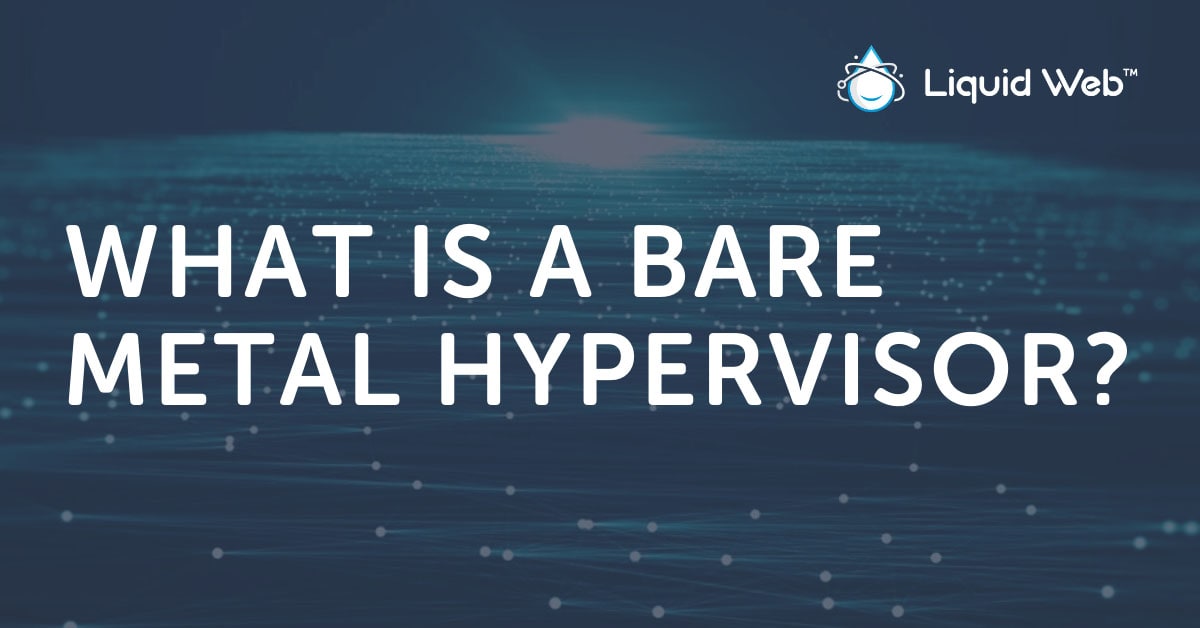
Using a hypervisor, multiple VMs (guest machines) can function alongside one another while utilizing the physical computing resources from the same computer (host machine). One of the two main types of hypervisors is known as a bare metal or Type 1 Hypervisor. This type of hypervisor is installed directly on the hardware of a physical host machine. The other type of hypervisor, generally called an operating system (OS)-level virtualization or Type 2 Hypervisor, is installed as a program on a host operating system.
With a bare metal hypervisor, there is no OS between the host machine’s hardware and the server virtualization software layer. Instead, the bare metal virtualization software is installed on the bare metal or hard disk of the host machine’s hardware where the OS is normally installed. This means that a bare metal hypervisor takes the place of a host OS while allowing several virtual machines to run on top of it simultaneously.
Because a bare metal hypervisor runs directly on a host machine’s hardware, it has direct access to available computing resources. This means that each VM created and operated via a bare metal hypervisor logically receives its own dedicated portion of the host machine’s resources. This includes things like processing power, memory, and storage. There is no loss of resources to a host OS, so the VMs can use a higher percentage of the physical resources of the server.
Using this type of hypervisor, several VMs can operate together simultaneously using the same host’s resources while remaining isolated from one another. This ensures VMs do not interfere with each other, especially if one VM suffers from a crash or security compromise.

- Allowing organizations to instantly build and run virtual machines.
- Providing a cost and energy-efficient way to run multiple VMs, rather than hosting different operating systems on multiple servers.
- Ensuring operating systems and their applications can run on different hardware types, rather than relying on OS-specific devices or drivers.
- Interacting directly with a host computer’s resources, such as CPU, RAM, and physical storage space.
- Allocating a host computer’s hardware resources and processing power to several VMs simultaneously while keeping them isolated.
- Eliminating the need to pass through a separate OS layer, which reduces latency.
- Offering more robust security, as there is nothing between the bare metal hypervisor and the host computer’s hardware to exploit.
- Enhancing VM portability and migration, as each VM can be easily moved across different host computers based on networking, memory, storage, or processing requirements.
For a bare metal hypervisor to successfully build and run multiple virtual machines while managing a host machine’s hardware, a separate management tool is required. This additional infrastructure means that setup and deployment of the hypervisor is more costly and complicated for the average user when compared to OS-level virtualization. However, the benefits in performance and security outweigh the drawbacks for more companies with more robust computing needs.
There are many different vendors out there offering advanced bare metal hypervisors—and each one offers different configurations based on your organization’s unique needs.
Features to consider could include how many virtual machines you need to deploy, the maximum resource allocation requirements for each VM, and other specific functionalities.
When choosing a bare metal hypervisor solution, it’s important to research each vendor thoroughly. Many vendors offer multiple products, tools, and layers of licenses.
When your organization needs to quickly build and run several VMs from a single host machine, bare metal hypervisor virtualization technology is a good solution.
These Type 1 Hypervisors can help your IT team consolidate, streamline, and manage business-critical VMs from a central platform. They can also provide your organization with VM portability for a simplified live migration process.
If you’re in the process of migrating to the cloud or looking for a reliable cloud hosting solution, Liquid Web has got you covered.
If you’re looking for a powerful cloud-based solution, you should consider our Cloud Dedicated Servers. These single-tenant, stand-alone servers give you the power and performance of a traditional dedicated machine with the added benefits of a virtualization layer, which provides near-instant provisioning and the flexibility of a cloud platform.
For a more robust cloud infrastructure, Liquid Web offers our Managed Private Cloud powered by VMware and NetApp. This highly scalable system can help you enhance your enterprise infrastructure and feature a highly available infrastructure and resource-based pricing. Additionally, with our built-in cloud hypervisor technology, the number of VMs you can deploy is only limited by the resources you have available. However you proceed, our reliable hardware, network, and 24/7 support make it simple to stay in control of your cloud environment.
[ad_2]
Source link






